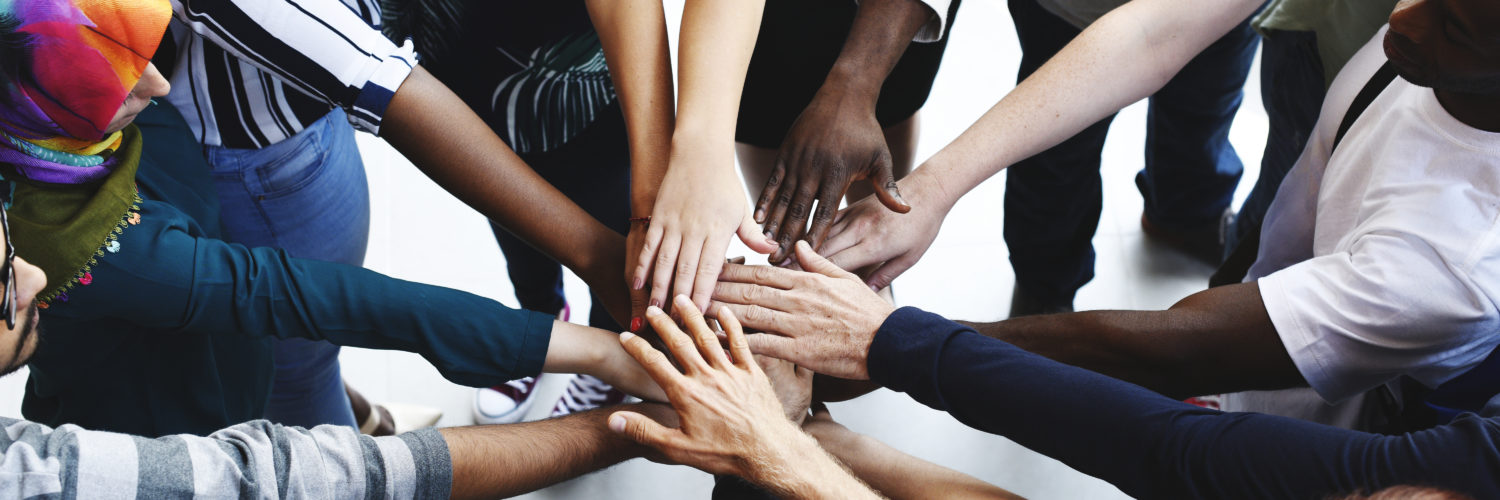My Indian daughter is being raised by a Filipina mother and Italian/Irish father and we still have to be purposeful when thinking about diversity and multiculturism in our home. It doesn’t always come naturally, but it also doesn’t have to be complicated or intimidating. Here are five easy ways (and three not-so-easy ways) to foster multiculturalism in your home.
5 Easy Ways To Foster Multiculturalism in Your Home
1. Bring diverse books, toys, movies, and music into the home
So this may seem obvious, but when we brought home our daughter from India we soon realized how hard it is to find media that represented people of diverse backgrounds. Luckily, we have an amazing support group that helped us stock our home library with books and movies that celebrate my daughter’s culture. Some parents have even written and published their own books just to have more representation in the world.
Sometimes we have to get creative. A friend told us to take the doll Tianna from Disney’s Princess and the Frog and dress it in Jasmin`s clothing from Aladdin and you have an Indian Disney princess!
But, while we often celebrate India, we also want to teach our daughter to love all cultures and respect all people. That starts with representing people from different countries, as well as subcultures in the United States. The library is the best place to start. The children’s librarians are experts at finding books and materials that educate and make culture accessible to children at any age or stage of life. And honestly parents, we learn a lot too!
Our library has culture kits that are boxes full of books, clothing, materials, and more from different countries. My niece is part Peruvian so we rented a kit that has traditional clothing of the people and books about the country. There are sometimes instruments and tools included that teach about life in that country. We recently checked out a “Dance Around the World” DVD kit. It included instructional dance videos from Latin America, tribal African dances, Bollywood, American hip hop, and more! We laughed and danced and must have lost ten pounds exercising and learning while listening to amazing music.
There are millions of hours of music from all around the world on YouTube. Get started and explore the cultures of the world. Don’t be surprised when you fall in love with mariachi or K-pop or Celtic music. Chinese rap is pretty awesome too!
2. Attend cultural events and festivals in person or virtually
I know that 2020 canceled attending many events in person, but there is a silver lining in that cultural events around the country and world are now offered online. I took a tour of the Holy City in Israel while eating popcorn on my couch. My family watched The Nutcracker being performed in Europe from the comfort of our home. There is an Indian cultural camp each year and now, instead of having to fly across the country to attend, we can Zoom into all the events and meet new people online.
As the world opens up, my family prefers to attend in person. There is no better way to learn about a person’s heritage than to meet people from that culture. International festivals and celebrations are a great way to meet new people and make multiculturalism normal in your home.
One reason we love our church is the diversity and celebration of all nations. We support missionaries serving all over the world. At one point, our church building was hosting an African church on Saturdays and a Samoan church on Sunday afternoons. Throughout the year, we would come together as one big church and sing worship music in different languages. Most Sundays it is common to see multiple families sporting clothing from their home culture. Every Sunday feels like a cultural event. We display flags of any country we are afflicted with as a church and the goal is to have a flag from every nation on God’s green earth.
3. Global cooking nights/shopping at international Markets/Shops
Another great way to bring the world into your home is through cooking! Who doesn’t love to eat? It can be intimidating at first, so start small. Order takeout from an unfamiliar place and take pictures of the dishes and their names. Go out to eat at a family-owned Ethiopian restaurant and ask questions about the food and the food customs as well. I love to go to restaurants on buffet days! My family can try many different foods at one time. It is also fun to go to Chinese restaurants and order a family-style meal with many dishes for the whole group to share and explore!
Once you are out of your food comfort zone, it is time to cook out of your comfort zone! I have a friend who spins their globe and randomly chooses a country to research and cook a dish. They call it Global Night. To get started, watch YouTube videos and get inspiration from a specific country or region. Then, go shopping. We are lucky to have several Asian and Indian markets nearby, but even regular grocery stores will carry unique ingredients. Also, if you need a specific spice blend or nonperishable ingredients, it is easy to find them online and have them shipped to your front door.
There are Greek delis, Russian grocers, and more online and in-person. It just takes some looking. There are even chain grocery stores that have enormous international sections representing many parts of the world. More grocery stores are moving in that direction.
Once you have, for example, a Nigerian spice blend, you can do many other disses from the same culture again and again. I have even learned to make my own Cajun seasoning. Don’t be afraid to try new things and make mistakes. That is how we learn.
You may say, “My kid is picky! They only eat chicken nuggets and hot dogs”.
I will admit that my child can be the same way. When we adopted our daughter, she only ate a few simple foods. Over time, we added new foods and textures. Now, as a four-year-old, she eats spicy curries and smoky pork fajitas (but she does pick out the onions). When we make exploring new food an adventure or a game, our kids respond.
4. Celebrate holidays
This one is so fun because the possibilities are endless. To get started, we research our own holidays and how they are celebrated around the world. Add an Icelandic Christmas tradition alongside your existing family traditions. Read about St. Nicholas or Father Christmas as they know him in the United Kingdom. Celebrating this way shows us how we are more alike than dissimilar. Assemble star lights to lead the wise men to your house like Christians in India do when celebrating the birth of Jesus. It is easy to see the differences and try to divide people because of culture. Instead, we should embrace what we have in common. Don’t be blind to race and culture, celebrate it through holidays.
How do Russians celebrate the new year? What traditions and superstitions do Brazilians hold near and dear to their hearts? Do Japanese people have a unique way to celebrate Valentine’s Day? Learn about a holiday we don’t even celebrate in the United States. Wouldn’t it be a blast to celebrate in a fun new way?
5. Host an exchange student
This may seem like a huge undertaking, but it is surprisingly easy to add an exchange student to your family. Typically, a student is in high school or college and comes through an agency to live with an American family for a season or longer. They are vetted and background checked to make sure they would be a good fit for their host families. The family looks through profiles and can even choose a specific student. These students bring their own spending money and come wanting to experience everyday life. The host families don’t have to provide elaborate vacations or daily fun activities. Just live life and they come alongside for a short time.
Hosting an exchange student can be especially fun if you have young children. During my childhood, we hosted dozens of exchange students. In many countries, it was a novelty to have large families and some of the students had no siblings, so they loved being a part of a family with many little ones running around. They would participate in chores and follow the customs and traditions of their American host families. The exchange is these students would also share their culture and language. I grew up thinking it was normal for someone to have an accent. I learned how to say I love you in 10 different languages. Now, when I travel the world I almost always have a place to stay because all our students invited us to visit their homes as well.
People think they need to entertain their exchange students or have a perfectly clean home the whole time they host. That is not true. I have five slobs for sisters and our exchange students never complained about the mess. They loved being welcomed into a real-life family and eating processed American junk food. Our German student even took a whole suitcase of peanut butter and boxed dinners home because they don’t sell it in her country.
Hosting an exchange student normalizes differences in language, customs, and culture. It is easy to be multiculturally-minded when the person across the breakfast table is writing a letter in French while we eat Captin Crunch and talk about the very American high school football game we are going to attend that night. I can understand accents, travel to new countries with confidence and ease, and start up conversations with people who look completely different than me because of my many beloved exchange students. I still keep in touch with many of my “sisters” from all around the world. They came as exchange students and left as family and that is something you can’t teach your children from a book.
3 Less easy but still amazing ways to foster multiculturalism in your home
1. Join a culture club or class
This can be difficult depending on where in the world a family lives, but again, there are virtual meet-ups and online groups that meet regularly as well. While it is more commitment and more work to find and pay for a class or club fees, it will be worth all the time and money.
Growing up we attended a Filipino culture club once a month. My mother packed all six of my siblings in the car and drove across town so we could learn about our heritage and meet others like us. I so appreciate all the work she put into fostering multiculturalism in our home.
2. Learn a new language
This is hard work. I am currently learning American Sign Language (ASL), and I know it is difficult. Children, however, learn much easier than adults and if we can get new languages into our children’s minds at a young age, they will have valuable skills for the rest of their lives. As they learn a new language they will learn a new culture and a new way of life. They will also be able to communicate more with more citizens of our world and what is more multicultural than meeting a person and talking to them in their native tongue? As I learn and teach ASL to my daughter, we are also learning about the deaf and hard-of-hearing community. When I learned Spanish, I studied the many countries and people groups that speak Spanish across the world.
The library is our friend for renting language materials and YouTube is an awesome online teacher. Also, there are conversation groups to practice and meet people. So start speaking!
3. Travel with your children
While traveling may be expensive, it is one of the best ways to foster multiculturalism. A child will appreciate their own home and understand their own culture better as well. Leaving what is familiar and known and embracing the adventure of a new language, customs, and food is an invaluable experience. Even if leaving the country is not an option, at least travel closer to home and experience the subcultures of this country. That can be life-changing.
When I was 18, I packed my bags, booked the cheapest, least-direct route to South America, and arrived in a distant land sleep-deprived but ready for adventure. My parents rocked at providing a multicultural home but I still had culture shock when I stepped off the plane to people yelling in Spanish and pushing past me to hug loved ones. I was greeted by a former exchange student who kissed me on both cheeks and we cried happy tears to be together again. After two hours of driving impossibly narrow mountain roads, I was greeted by her whole family, an enormous amount of amazing Colombian food, and loud reggaeton music. I spent one of the best summers of my life having adventures, taking pictures, dancing, and making lifelong friends while improving my rudimentary Spanish.
I came home with a better understanding of my own culture and a healthy respect for the customs and traditions of others. I have pictures and Colombian money and memories I share with my own child. I hope to travel with my kids as well and give them an invaluable gift of seeing the world. We plan to take our daughter back to India to see where she was born and experience her first home.
There are easy ways and hard ways, but the most important part of exploring multiculturism in your home is getting started. Don’t be afraid to make mistakes. Don’t be afraid to meet new people. Just have an open heart and an open mind and your family will be better off for it.




